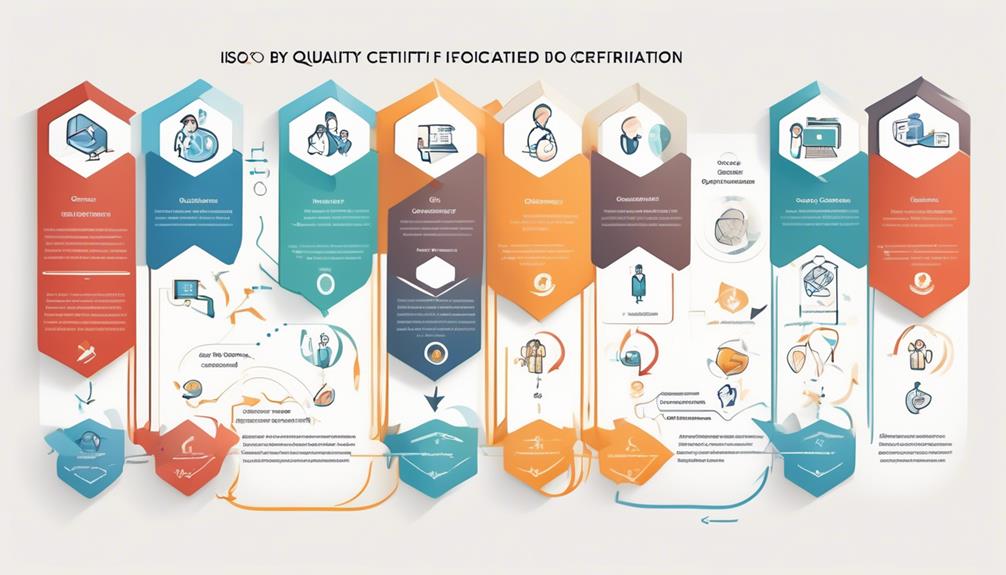Aiming for top-notch quality in our products and processes can be challenging. Implementing Statistical Quality Control (SQC) can have a significant impact on businesses striving for excellence.
The techniques and tools explained in this guide offer practical insights and strategies to tackle quality control issues head-on. From understanding the fundamentals of SQC to implementing advanced methodologies like Six Sigma and Lean Manufacturing, this discussion will shed light on the key techniques that can make a significant impact on our quality management practices.
Key Takeaways
- Statistical Quality Control (SQC) involves using statistical methods to monitor, evaluate, and improve process quality.
- Control charts help visualize process variation over time and distinguish between common cause and special cause variation.
- SQC empowers organizations to identify and address process inefficiencies, leading to a culture of continuous improvement.
- Key techniques in SQC include control charts for monitoring, process capability analysis, root cause analysis, and statistical process control (SPC).
Understanding Statistical Quality Control
In understanding Statistical Quality Control (SQC), we must comprehend its fundamental principles and applications within the broader context of quality management.
SQC involves the use of statistical methods to monitor, evaluate, and improve the quality of processes. Control charts, a key tool in SQC, enable the visualization of process variation over time, allowing us to distinguish between common cause variation and special cause variation. This is crucial in identifying when a process is operating as intended or when intervention is needed to address unexpected variation.
Quality Management integrates SQC by providing the framework for organizations to establish and maintain a culture of continuous quality improvement. Statistical methods, such as control charts, play a vital role in this pursuit by providing the means to objectively assess process performance and make data-driven decisions.
Embracing SQC within Quality Management empowers organizations to proactively identify and address process inefficiencies, leading to sustained quality improvement.
Identifying Key Quality Control Techniques
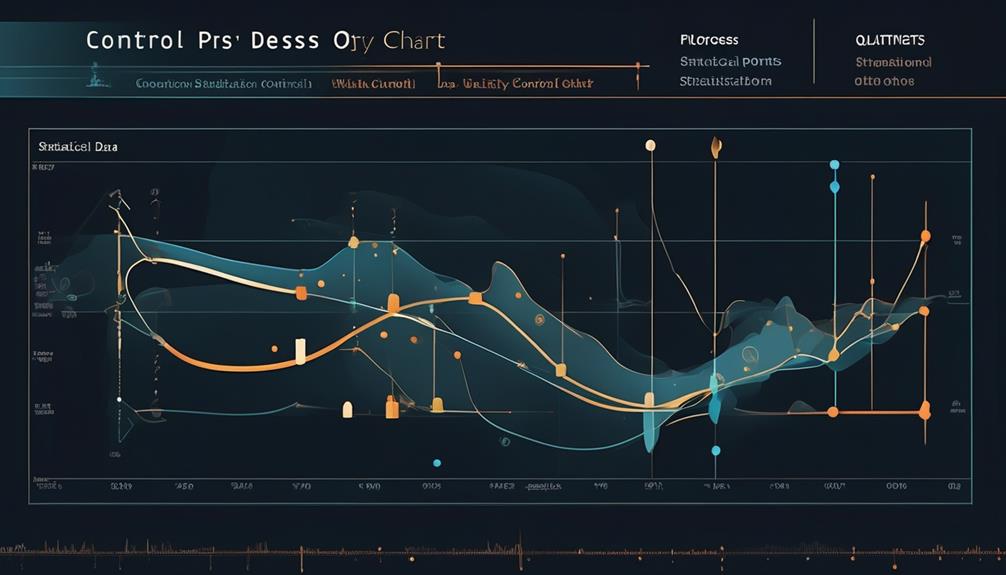
We will now address the key quality control techniques, including control charts for monitoring, process capability analysis, and root cause analysis techniques.
These techniques play a crucial role in identifying and addressing quality issues in manufacturing processes.
Control Charts for Monitoring
Implementing control charts for monitoring variable measurements is a key quality control technique that brings essential process elements into statistical control. By utilizing Statistical Quality Control (SQC) methods, organizations can effectively monitor and analyze processes to ensure quality assurance.
Control charts, a fundamental tool in SQC, help distinguish between common cause and special cause variation, providing a basis for identifying common and assignable causes of variation. This is crucial for maintaining process stability and consistency.
Through the application of statistical techniques, such as control charts for monitoring, organizations can proactively identify and address variations, ultimately improving overall process performance. As part of SPC methods, control charts play a pivotal role in ongoing quality control efforts, enabling businesses to make data-driven decisions and continuously enhance their processes.
Process Capability Analysis
Process Capability Analysis assesses a process's ability to meet customer requirements using statistical methods and calculates capability indices such as Cp and Cpk. This analysis helps determine if a process meets product specifications and provides a quantitative measure of its performance. By using SPC techniques, quality control professionals can identify areas for improvement and ensure that processes meet quality standards.
Process Capability Analysis is crucial for continuous improvement, as it allows organizations to focus on enhancing processes to achieve higher levels of quality and customer satisfaction. It plays a key role in the overall framework of statistical quality control, complementing other techniques such as control charts for monitoring process performance and variability.
Root Cause Analysis Techniques
Identifying key quality control techniques involves utilizing root cause analysis methods to systematically pinpoint and eliminate process problems.
Techniques such as brainstorming, cause and effect diagrams, Pareto charts, histograms, and scatter diagrams play a crucial role in identifying key process elements and variables.
Statistical process control (SPC) is instrumental in bringing key variables under control using process control charts for both variable and attribute measurements.
Moreover, process capability measures and comparison against requirements are employed to gauge and enhance process capability.
Continuous improvement necessitates a steadfast commitment to enhancing quality, productivity, and addressing other identified issues.
Implementing Control Charts for Monitoring
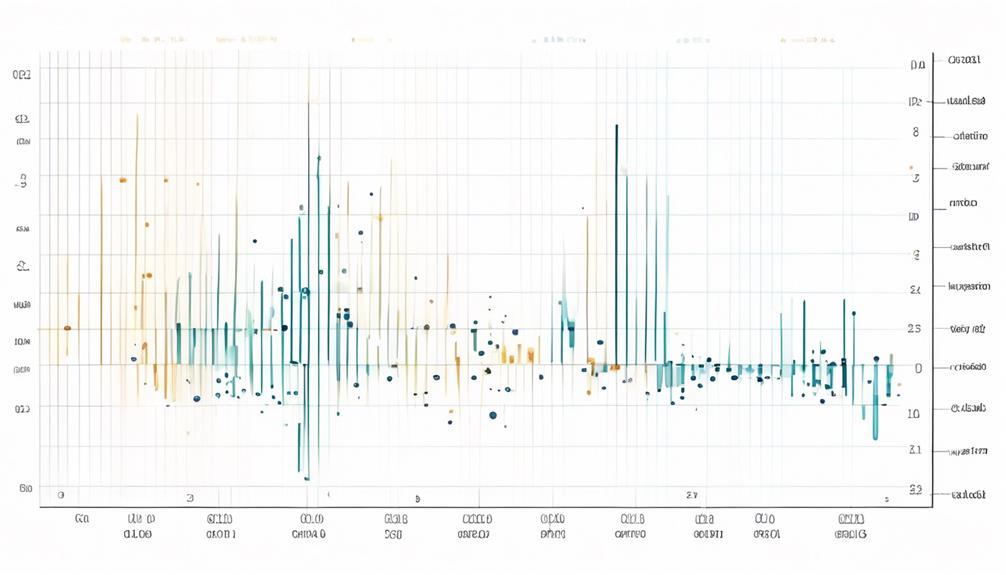
Let's start by examining the basics of control charts, including how to choose the right parameters for a specific process.
Understanding how to interpret the results from control charts is crucial for taking appropriate corrective action when necessary.
Control Chart Basics
Using statistical quality control techniques, we implement control charts to monitor process quality and identify variation causes. Control charts, a fundamental aspect of Statistical Process Control (SPC), are essential tools in quality control. They help us in maintaining consistent quality by indicating whether quality standards are being met through values within control limits.
Key aspects of control chart basics include:
- Different types of control charts, such as x̄-chart and p-chart, for monitoring sample mean, process variability, and defectives.
- Plotting sample mean values and taking corrective action when values fall outside control limits.
- Triggering corrective action in out-of-control situations to restore acceptable quality levels.
- Identifying causes of variation in the process, leading to improvements.
- Providing a visual representation of the process, aiding in statistical analysis and decision-making.
Choosing Chart Parameters
When implementing control charts for monitoring, the selection of chart parameters plays a critical role in ensuring effective quality control and timely detection of process changes. Choosing the right sample size, sampling frequency, and control limits is essential for successful implementation of statistical quality control (SQC) methods such as control charts in the context of Statistical Process Control (SPC). The table below summarizes the key considerations when choosing chart parameters:
| Parameter | Considerations |
|---|---|
| Sample Size | Impact on detecting process changes; practicality for implementation |
| Sampling Frequency | Ability to detect shifts in a timely manner; alignment with quality goals |
| Control Limits | Set based on process variation; balancing false alarms and missed shifts |
Careful consideration of these parameters is crucial for the effective application of control charts as powerful tools in quality control methodologies.
Interpreting Chart Results
In implementing control charts for monitoring, the careful selection of chart parameters plays a critical role in ensuring effective quality control and timely detection of process changes.
When interpreting chart results, it's essential to conduct a thorough analysis to derive meaningful insights. Key considerations include:
- Understanding the different types of control charts and their specific applications
- Identifying patterns or trends such as shifts, trends, cycles, and points beyond control limits
- Utilizing statistical analysis techniques to distinguish between common cause and special cause variations
- Triggering appropriate corrective actions when values fall outside control limits
- Leveraging control chart data to drive continuous quality improvement initiatives.
Utilizing Process Capability Analysis

To assess whether a process can meet customer requirements, process capability analysis involves comparing process variability with product specifications. This analysis utilizes statistical quality control tools to calculate process capability indices such as Cp and Cpk, which provide quantitative measures of a process's ability to meet specifications.
By employing control charts and other SPC tools, manufacturing processes can be monitored and evaluated to determine if they're capable of consistently producing products that meet customer requirements. Process capability analysis is crucial for identifying potential improvements in the manufacturing process. It enables organizations to make data-driven decisions aimed at enhancing product quality and ultimately increasing customer satisfaction.
Applying Six Sigma Methodology
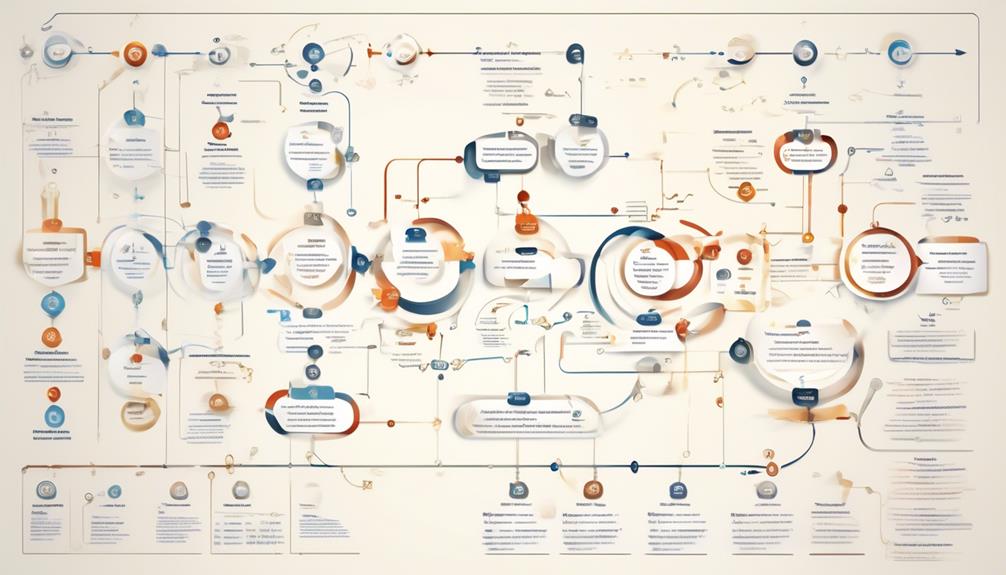
We will now explore the fundamental concepts of Six Sigma, including the DMAIC process and the various quality improvement techniques associated with this methodology.
By examining the basic principles of Six Sigma, we can gain a deeper understanding of how it can be effectively applied to enhance process efficiency and quality.
This will provide us with a solid foundation for implementing Six Sigma techniques within our quality control framework.
Six Sigma Basics
Rarely does a methodology in the realm of process improvement garner as much attention and acclaim as Six Sigma. This approach, aimed at achieving near-perfection by reducing defects to 3.4 per million opportunities, relies on statistical quality control techniques and process control methods.
Key aspects of Six Sigma basics include the DMAIC framework for continuous improvement, emphasizing Define, Measure, Analyze, Improve, and Control. Additionally, it focuses on process capability, variation, and the use of control charts to monitor and maintain the quality levels.
Six Sigma demands extensive training and certification, ensuring practitioners are well-versed in statistical tools and methodologies. Its data-driven approach and focus on reducing variation make it a powerful mechanism for achieving and maintaining high levels of process quality.
- DMAIC framework for problem-solving and process improvement
- Emphasis on process capability and variation
- Utilization of control charts for monitoring quality
- Data-driven decision making
- Extensive training and certification requirements
DMAIC Process
Implementing the DMAIC process is a structured and systematic approach for applying Six Sigma methodology to achieve continuous improvement in problem-solving and process optimization.
The five phases of DMAIC—Define, Measure, Analyze, Improve, and Control—provide a clear roadmap for addressing quality issues.
In the Define phase, the focus is on identifying the problem, setting project goals, and understanding customer requirements.
The Measure phase involves quantifying the problem through meticulous data collection and analysis, providing a baseline for improvement efforts.
Subsequently, the Analyze phase utilizes statistical methods to uncover the root cause of the issue.
Following this, the Improve phase involves implementing solutions and verifying their effectiveness.
Finally, the Control phase ensures that the process control methods are in place to sustain the improvements achieved.
DMAIC is an invaluable tool for organizations seeking to enhance their statistical quality control processes.
Quality Improvement Techniques
Applying Six Sigma methodology involves utilizing a structured and data-driven approach to reduce defects and variation in processes, ultimately improving quality.
In this context, several key techniques are employed to drive quality improvement:
- DMAIC (Define, Measure, Analyze, Improve, Control) and DMADV (Define, Measure, Analyze, Design, Verify) provide structured frameworks for process improvement.
- Six Sigma tools such as process mapping, cause and effect analysis, and hypothesis testing enable effective problem-solving.
- Statistical analysis plays a crucial role in identifying variations and trends for informed decision-making.
- Control charts help in monitoring process performance and detecting any deviations from the standard.
- Process control and quality control measures are implemented to ensure consistency and adherence to quality standards.
These techniques collectively contribute to the successful implementation of Six Sigma methodology, aiming to achieve a significant reduction in defects and a high level of quality.
Establishing Quality Control Teams

To effectively establish quality control teams, cooperative action from many individuals is essential, with a particular focus on creating an environment that allows for effective problem-solving. In the process of implementing statistical quality control, the commitment of top management is crucial to foster a culture of continuous improvement and problem-solving. By establishing quality control teams, organizations can effectively identify and eliminate problems, leading to enhanced quality and productivity. To ensure the successful establishment of quality control teams, it is imperative to build a system that facilitates problem-solving and decision-making. This involves the identification of key process elements and variables through brainstorming sessions and cause-and-effect diagrams. Additionally, the active involvement of employees at all levels is vital to ensure that the quality control teams are equipped with diverse perspectives and expertise. The table below outlines the critical steps for establishing quality control teams:
| Critical Steps for Establishing Quality Control Teams |
|---|
| Commitment of top management |
| Building a system for problem-solving |
| Identifying key process elements and variables |
Integrating Failure Mode and Effects Analysis (FMEA)
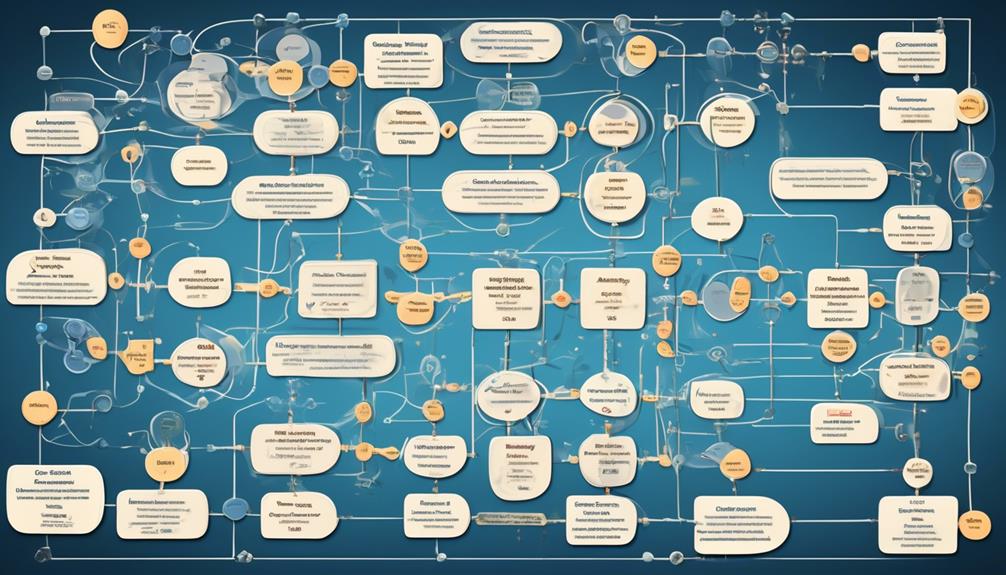
Failure Mode and Effects Analysis (FMEA) integrates failure modes, their effects, and the criticality of those effects into the design and production process. This method helps in identifying potential failure modes in products or processes and their impact on customer satisfaction and safety. It aims to prioritize and address potential failures by evaluating their severity, occurrence, and detection. The analysis involves brainstorming sessions and using tools like cause and effect diagrams, Pareto charts, and risk priority numbers (RPN).
FMEA requires teamwork and collaboration to systematically assess and mitigate potential failure modes. It helps in implementing corrective actions and maintaining the process in control through the use of control charts and statistical analysis.
Implementing Lean Manufacturing Principles

Integrating Lean Manufacturing Principles into the production process involves streamlining operations and optimizing efficiency to mitigate potential failure modes and enhance overall quality control. This approach focuses on minimizing waste, maximizing value, and continuously improving processes.
Lean Manufacturing emphasizes the importance of statistical analysis and process control to identify inefficiencies and variability in production. By utilizing control charts and statistical analysis, organizations can monitor and manage key process parameters to ensure consistency and predictability in their operations.
Implementing Lean Manufacturing Principles also involves fostering a culture of continuous improvement and empowering employees to identify and address quality issues at the source. This proactive approach to quality control aligns with the fundamentals of Lean Manufacturing, where the goal is to eliminate defects and improve overall process efficiency.
Conducting Root Cause Analysis
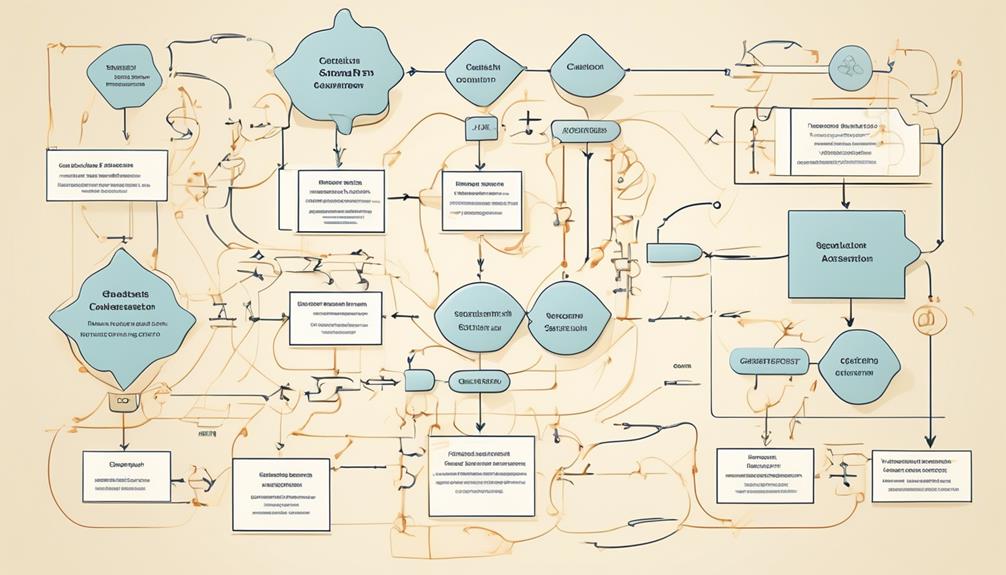
Conducting root cause analysis involves systematically identifying the underlying cause of a problem or defect within a process. This critical step in quality control aims to address the fundamental issue rather than just the symptoms, preventing recurrence of the problem.
To conduct effective root cause analysis, several techniques can be employed, including the 5 Whys, fishbone diagrams, and fault tree analysis. These methods aid in unraveling the complex web of factors contributing to an issue. Thorough data collection and statistical analysis are essential for uncovering the primary cause, providing a solid foundation for corrective actions.
The results of root cause analysis can guide process improvement efforts, leading to long-term quality enhancement. When implementing root cause analysis, utilizing control charts and cause-and-effect diagrams can facilitate a structured approach to identifying and addressing underlying issues within the process. This systematic methodology ensures that the root cause is effectively identified and addressed, contributing to sustained process control and quality improvement.
Ensuring Continuous Improvement Through SPC

Implementing Statistical Process Control (SPC) techniques is essential for ensuring continuous improvement in quality and productivity within an organization. SPC facilitates immediate corrective action in 6% of cases and cooperative action in 94% of cases, making it a powerful tool for enhancing process control and quality.
The implementation of SPC necessitates top management commitment to foster an effective problem-solving environment, as well as the establishment of a robust problem-solving system and the identification of key process elements and variables.
Utilizing control charts for variable and attribute measurements and measuring process capabilities are integral steps in SPC implementation. Furthermore, continuous improvement is a crucial aspect of SPC, requiring a sustained, long-term commitment to enhancing quality and productivity.
Frequently Asked Questions
What Are the Techniques of Statistical Quality Control?
We use techniques like control charts, histograms, and scatter diagrams to bring key process elements into control. These tools help in recording data, detecting unusual events, and distinguishing between common cause and special cause variations.
Additionally, we employ real-time data collection and analysis tools such as the digital clipboard, QPS, and EnGagePlus! to facilitate effective process management. This allows us to measure process capability, implement improvement plans, and focus on continuous enhancement.
How Do You Implement Statistical Quality Control?
We implement statistical quality control by:
- Building a problem-solving system
- Identifying key process elements and variables
- Using SPC to bring key variables into control
- Measuring process capability
- Implementing a plan of process improvement
- Continuous improvement
These steps are crucial for:
- Increasing quality and productivity
- Problem identification and elimination
- Immediate corrective action
Additionally, utilizing digital tools like:
- The digital clipboard
- QPS software
- QPS Cloud
- EnGagePlus! software
Can streamline real-time data collection and analysis for effective SPC implementation.
What Are the Techniques of Spc?
We use statistical process control (SPC) techniques to monitor and control processes.
SPC involves process control charts for variable and attribute measurements. These tools help distinguish between common and special cause variations.
They also aid in avoiding defects, determining sample sizes, testing conformity, and assessing processing.
SPC requires management commitment, employee involvement, and cooperative worker/manager relationships.
This ensures effective implementation and utilization of the techniques.
How Do You Implement Statistical Process Control?
We implement statistical process control by:
- Identifying key process elements and variables through brainstorming sessions and diagrams.
- Using SPC to bring these variables under control with process control charts.
- Measuring process capability against requirements and engineering limits.
- Implementing improvement plans when needed.
Our commitment to quality and productivity drives us to continuously improve and document the SPC implementation process.
Conclusion
In conclusion, statistical quality control is crucial for ensuring product quality and process improvement.
Did you know that companies that implement SPC programs experience an average of 40-60% reduction in defects?
By utilizing key techniques such as control charts, process capability analysis, and Six Sigma methodology, organizations can achieve significant improvements in their quality control processes.
It's clear that statistical quality control is a powerful tool for driving continuous improvement and maintaining high standards of quality.
Randy serves as our Software Quality Assurance Expert, bringing to the table a rich tapestry of industry experiences gathered over 15 years with various renowned tech companies. His deep understanding of the intricate aspects and the evolving challenges in SQA is unparalleled. At EarnQA, Randy’s contributions extend well beyond developing courses; he is a mentor to students and a leader of webinars, sharing valuable insights and hands-on experiences that greatly enhance our educational programs.

